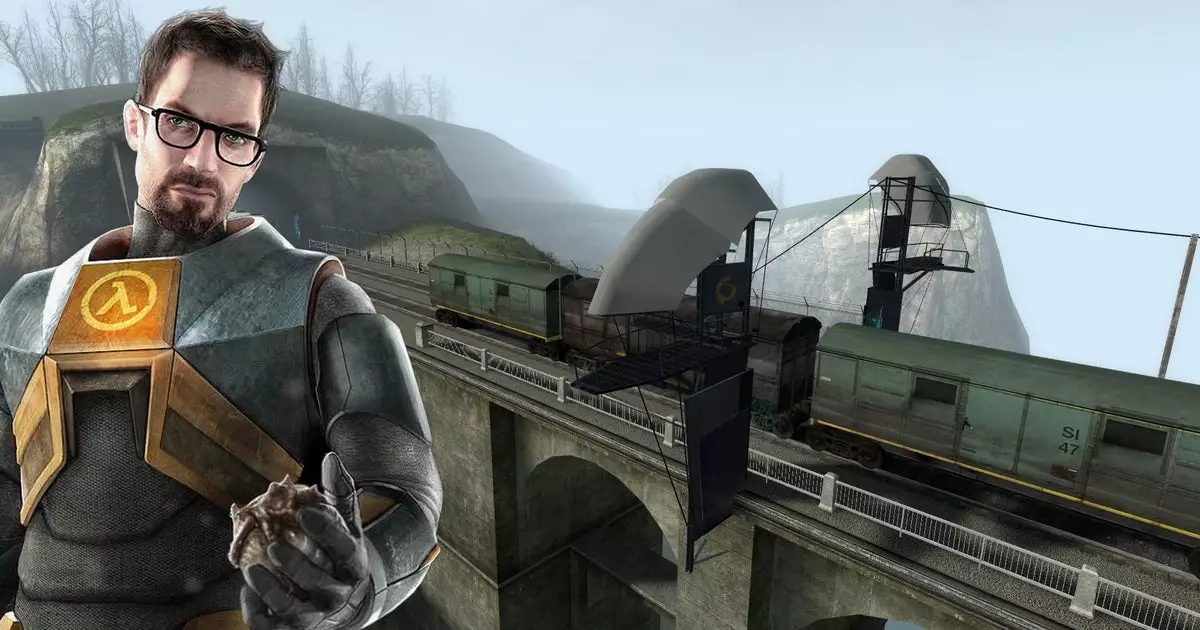Video games that stand the test of time often do so because of their innovation, storytelling, or gameplay mechanics. However, a significant factor that keeps older titles relevant is continuous refinement—subtle updates that breathe new life into familiar experiences. Valve’s recent minor patch for *Half-Life 2* exemplifies this principle. This update, which adjusts the train’s speed in the “Highway 17” level, might seem insignificant on the surface, but it reveals a deeper understanding of how small design choices impact player enjoyment and perception. Long-time fans might see this as a nostalgic gesture, but it also underscores the importance of developer stewardship in preserving the legacy of classic titles.
What strikes me most about Valve’s approach is its attention to detail—adjusting a train’s velocity may seem trivial, yet it profoundly affects the pacing and challenge of an iconic moment. When the train now approaches at a more accurate speed, it restores not only a mechanic but the original tension intended by the creators. This subtle correction demonstrates respect for the game’s design philosophy and acknowledges that even decades-old games can benefit from slight tuning to align with modern expectations. Such updates serve as a reminder that games are living media; they evolve beyond their initial release, and that evolution can deepen player engagement.
Small Changes with a Big Impact on Player Experience
One of the most intriguing aspects of Valve’s maintenance philosophy is their focus on correcting seemingly minor issues—like collision detection flaws or NPC behaviors—that ripple through the gameplay experience. For instance, fixing NPCs shooting through walls or smoothing Alyx’s movements may seem inconsequential, but they directly influence immersion and gameplay fairness. These updates highlight an ongoing commitment to quality assurance, long after the game’s launch.
More interestingly, such fixes also serve a practical purpose for dedicated players. Speed runners, modders, and enthusiasts often push titles to their limits, uncovering quirks and exploits that define their communities. The removal of an invisible wall in a sewer pipe, for instance, represents not just a bug fix but a conscious effort to keep the game accessible and open-ended. These tiny tweaks embody a respect for player ingenuity and showcase Valve’s understanding that preserving a game’s integrity enhances its cultural longevity.
However, it’s worth critical reflection to consider whether these modifications truly serve the broader community or are simply a legacy effort. Are they motivated by genuine desire to improve gameplay, or by the game’s ongoing commercial and cultural relevance? Regardless, the fact remains that such tiny adjustments reinforce the idea that great games are never truly finished—they are ongoing projects, subtly refined through years of community and developer interactions.
The Myth of the “Caretaker” and the Reality of Player-Centric Development
The humorous notion of a dedicated “invisible caretaker” at Valve lingering in a Windows XP-era environment fiddling with a level editor to polish a 20-year-old game is a charming myth that encapsulates this ongoing custodianship. It highlights a broader truth: that behind the scenes, passionate individuals, or perhaps a dedicated team, continue to maintain the games they cherish, often driven by a sense of duty rather than commercial necessity.
While it’s tempting to romanticize this effort as a lonely hero’s quest, reality suggests that these updates are a strategic part of maintaining relevance in an ever-evolving gaming landscape. Valve, and other veteran developers, recognize that their iconic titles are as much cultural artifacts as they are entertainment products. Small updates affirm their commitment and ensure these games remain accessible, enjoyable, and influential for new generations of players.
Moreover, these tweaks serve as a testament to the close relationship between developers and fans. They acknowledge that a beloved game is a shared history—a battleground for nostalgia, community, and ongoing discovery. Addressing minute issues, even in a game from 2004, reflects an understanding that quality is cumulative and that respectful stewardship can foster loyalty across decades.
The seemingly trivial patch notes for *Half-Life 2* reveal much about the evolving relationship between game creators and their communities. It’s about preserving legacy, enhancing experience, and respecting the nuances that made these games enduring classics. Small changes—like restoring the train’s speed—are not mere technical adjustments; they are acts of love that reinforce the timeless bond between a game and its players.


Leave a Reply